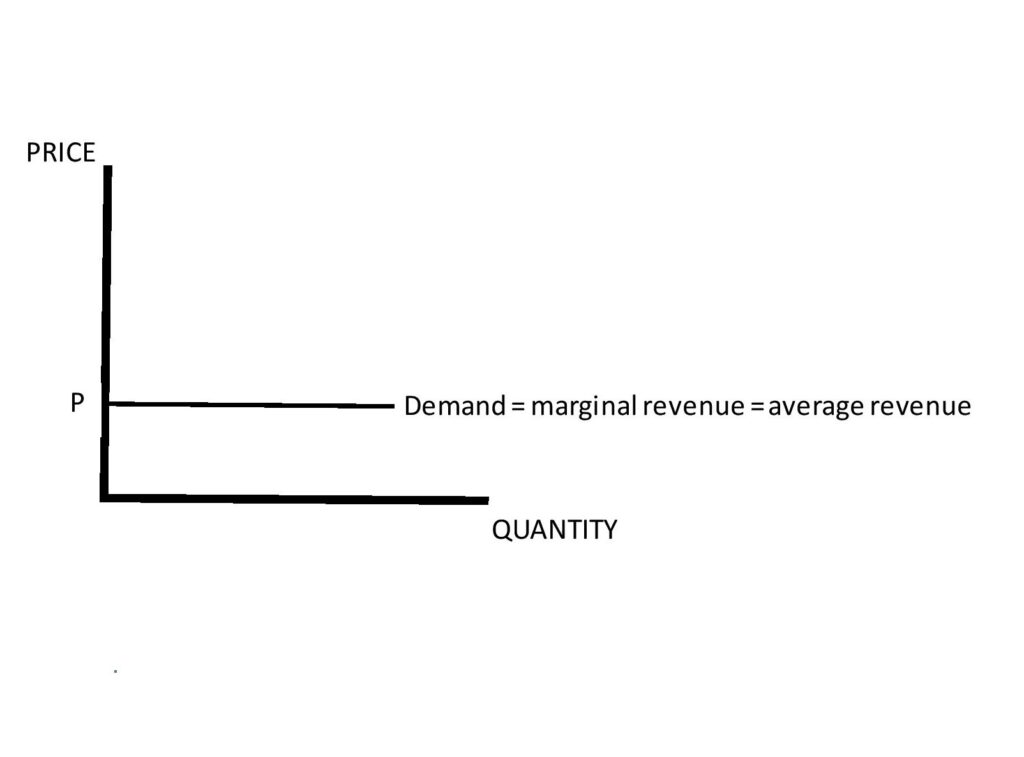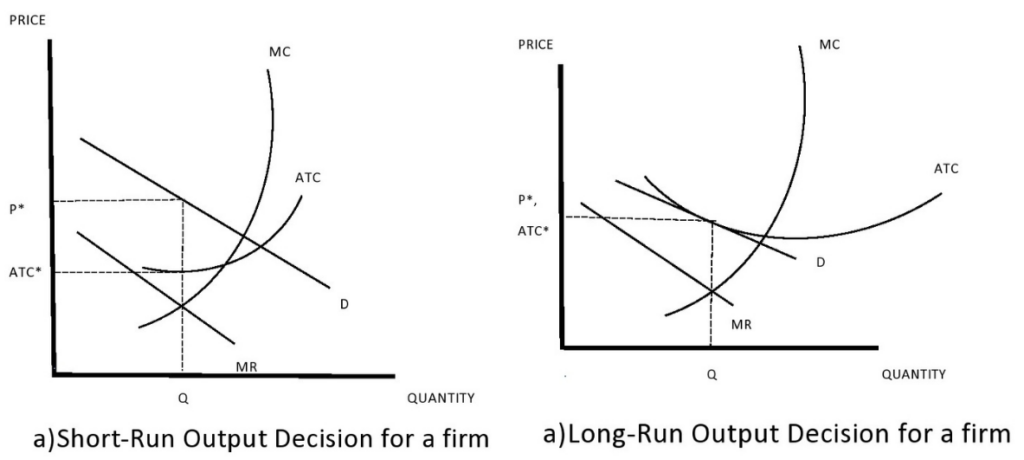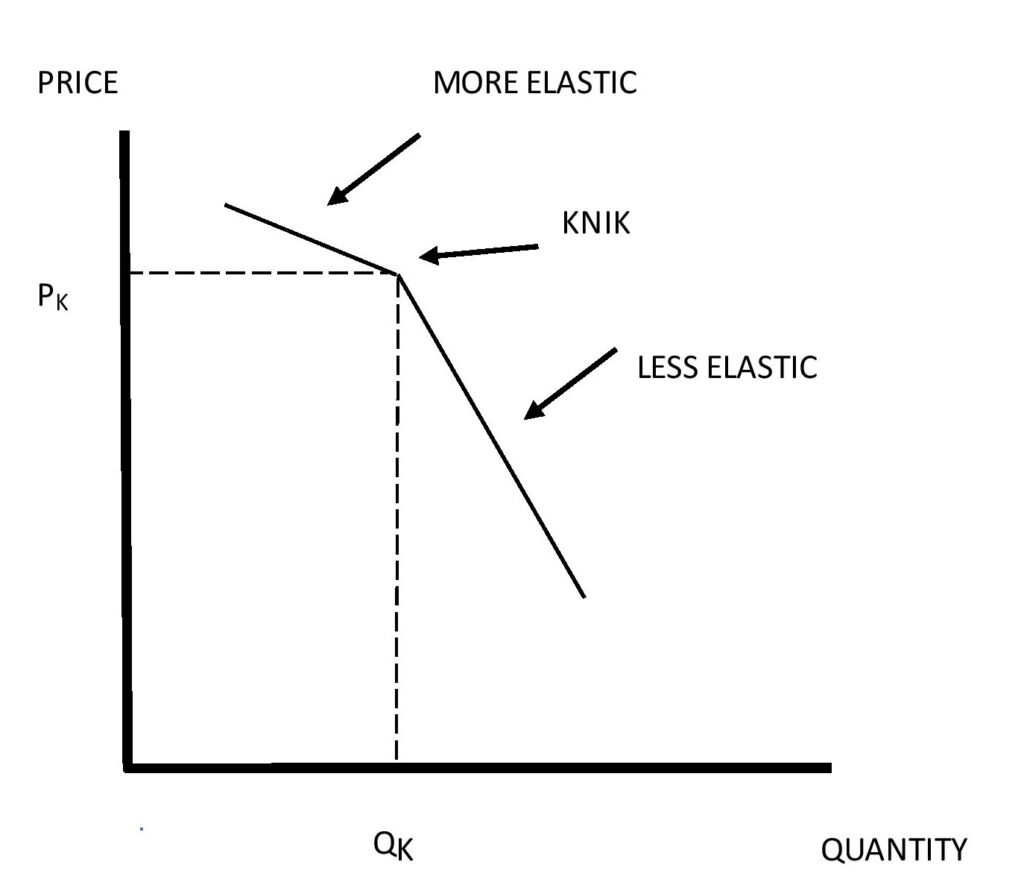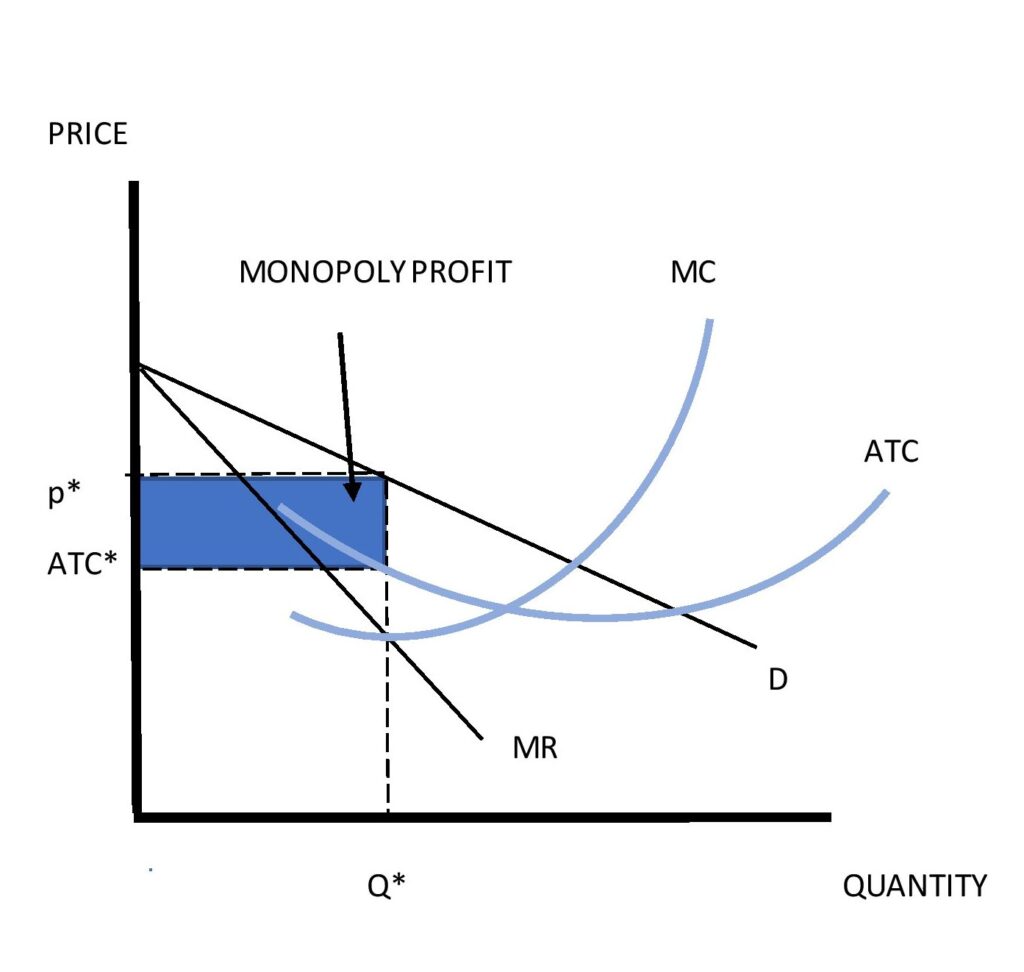There are four types of market structures:
- Perfect competition
- Monopolistic competition
- Oligopoly and
- Monopoly
We can categorise where an industry falls by examing it through the following sections.
CHARACTERISTICS OF MARKET STRUCTURE
| PERFECT COMPETITION | MONOPOLISTIC COMPETITION | OLIGOPOLY | MONOPOLY | |
| No. of firms | Many firms | Many firms | Few firms | Single firm |
| Barriers to entry | Very low | Low | High | Very high |
| Substitute | Very good substitutes | Good substitutes but differentiated | Good substitutes or differentiated | No substitutes |
| Competition | Price only | Price &Marketing | Price & Marketing | Advertising |
| Pricing power | None | Some | Some to significant | Significant |
PERFECT COMPETITION

- In a perfect competition several firms produce similar kind of goods and thus good substitutes are available.
- The competition among the sellers is only for the price.
- There are no barriers to entry.
- The price of the goods is decided through the demand and supply mechanism and not by the sellers.
- The reason behind calling it as a perfect competition is that it has a perfectly elastic demand curve at the price determined in the markets because no firm is large enough to set the market price.
- In a perfect competition market, the firm makes economic profits by producing the quantity at which the marginal revenue equals to the marginal cost.
THE MONOPOLISTIC COMPETITION

- The Monopolistic competition has a downward sloping demand curve where demand is elastic but not perfectly elastic.
- There are many firms producing similar kind of products which differs from one another in the quality or features.
- So that we can find good differentiated substitutes .
- The competition is not only for price but also for the quality and marketing of the products.
- The firm makes economic profits by producing the quantity at which the marginal revenue equals to the marginal cost.
- In the following graph the price has exceeded the average total cost and there is positive economic profits. Due to lower barriers to entry new firms will enter the market bringing the demand curve back to normal where price equals to cost.
- Example: Shampoos produced by different firms with similar features.
OLIGOPOLY

- In oligopoly markets the firms are at very few numbers.
- These companies are interdependent on each other in fixing the pricing strategies
- The decisions made by one company will directly affect another company decision. For example, let us consider that if Tata motors decide to drop the price of a particular car model then Maruti Suzuki should do the same in order to stay in competition with Tata motors
- Oligopoly has a kinked demand curve model, is based on the assumption that increase in the price will not be followed by the competitors but decrease in the price will.
- The graph shows us that at a price above P the demand is more elastic which means that the further increase in the price from P will result in less increase in sales and the quantity demanded will decrease and the competitors will remain at the same price P. But if the price is brought down from P, the quantity demanded increases and all the competitors will cut down their prices to the new arrived price to stay in competition.
MONOPOLY

- It is characterized by having a single producer dealing with the natural resources for public utility.
- The rights of the single producer are protected by copyrights and patents.
- The barriers to entry are very high.
- Monopoly markets are supported by the government because if there is more than one producer the cost of the goods may increase substantially higher than the single producer game.
- Monopoly has a downward sloping demand curve and the profit maximization involves a trade-off between price and quantity sold if firm sells at the same price to all the buyers.
- They are price searchers and have imperfect information regarding market demand.
- There are two pricing strategies:
- Single price where the products are sold at same price to all the customers
- Price discrimination where same products are sold for different prices




